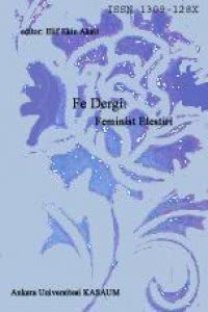Transhumanism, Posthumanism, And The “Cyborg Identity”
Posthumanism, Transhumanism, Ecofeminism
___
- Allenby, Braden. “Technology and Transhumanism: Unpredictability, Radical Contingency, and Accelerating Change,” Building Better Humans?: Refocusing the Debate on Transhumanism ed. Hava Tirosh-Samuelson and Kenneth L. Mossman (Frankfurt: Peter Land, 2011), 441-464.
- Åsberg, Cecilia and Braidotti, Rosi. “Feminist Posthumanities: An Introduction,” A Feminist Companion to the Posthumanities eds. Cecilia Åsberg and Rosi Braidotti (Switzerland: Springer, 2018), 1-22.
- Åsberg, Cecilia and Radomska, Marietta “Why we need feminist posthumanities for a more-than-human world,” August 23, 2019, https://www
- ISSN: 1309-128X
- Yayın Aralığı: 2
- Başlangıç: 2008
- Yayıncı: Ankara Üniversitesi KASAUM
“Mor Bir Halkla İlişkiler” Örneği Olarak ABD Bağlamında Oy Hakkı Hareketi
Toplumsal Cinsiyet, Savaş ve Hukuk: Kongo Demokratik Cumhuriyeti’nde Cinsel Şiddet Suçları
Feminist Mücadelenin Üniversitedeki Ayağı: CTS Birimleri
“Feminen” Alanlarda Erkek(Lik)Ler: Düşünceler, Önyargılar, Deneyimler
Sibel EZGİN AĞILLI, Ebru AÇIK TURĞUTER
Engelli Kadın Sürücülerin Deneyiminde Trafikte Eril Tahakkümü Bourdieucu Bir Analizle Anlama Çabası
Gönül Cemre ABACIK, Songül SALLAN GÜL
‘Dünyayı Yeniden Dokumak’ Shiva ve Mies’den Ekofeminizm
Transhumanism, Posthumanism, And The “Cyborg Identity”
